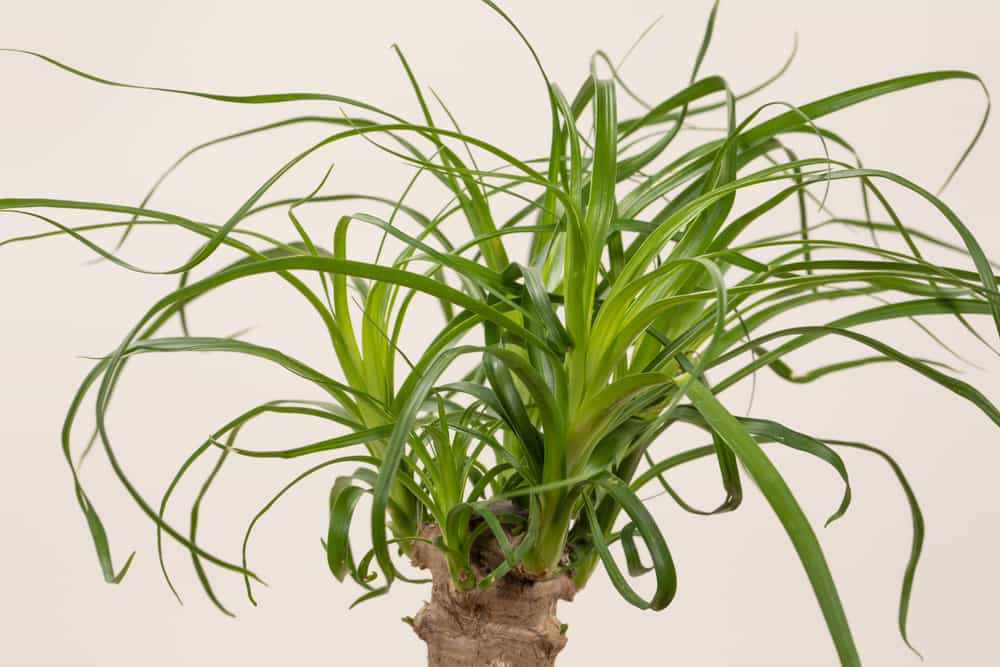Palms
Palm Plant
Do you catch yourself wishing you were on vacation on an exotic beach? With the Palm Plant, you can bring those vacation vibes inside your home. These iconic house plants are known to symbolize tropical settings, and you can transform your home into a tropical paradise by owning a couple of Palm Plants!
These plants are not just built for outside gardens, and you can keep and easily care for one indoors. Everyone has seen a ones of these beauties, but do you know what they exactly are? Read on further to find out more about Palm Plants, where to find them, their common features, the most popular types, and more!

What Are Palm Plants?
Many of the Palm Plants people have inside their homes belong to the plant family Arecaceae. Within the Arecaceae family, there are over 150 genera of flowering Palms with over two thousand species!
This category of plants also contains Palm Trees and indoor plants that most people are familiar with. These house plants can be tree-like, shrubs, climbers, or stemless.
This species tends to live longer than two years, but it has nevertheless had a significant impact on human history. These lovely plants can trace their history back to one ancestor that has evolved over millions of years. Researchers have discovered these plants have been around for 60 million years!
These plants have played a role in many different cultures throughout history. These plants have been mentioned in religious textbooks like the Bible and Quran. Historians have found evidence that the ancient civilization of Mesopotamia cultivated the Date Palm Plant for different uses.
The ancient Romans viewed the branches as a symbol of victory and triumph. In more modern times, they appear in the coat of arms of different municipalities.
What Are the Common Features of a Palm Plant?
Palm Plants are diverse, but they do share some common features. Each genus of this species has its shared features. Overall, here are some of its characteristics:
- Leaves: Although the leaves vary in size, they each have their unique shapes. The leaves of Palms are usually evergreen and compact. The leaves are divided and are known as fronds.
- Reproduction: All Palms reproduce from seed. Some Palms have separate male and female flowers for reproduction, while some Palms have both. The seed is surrounded by a fruit, more commonly seen in outdoor than indoor house plants of this type.
- Flower: All Palms produce a flower but do so at different times. For some Palms, it can take a few years, while others can take a few decades. When the flower blooms, it is usually off-white.
- Size: Although some Palms can grow higher than 100 feet, most are between 10 – 50 feet. Indoors, they can grow anywhere from five to twelve feet, depending on the interior space.
- Propagation: Plant owners can grow another plant for free! All you have to do is remove an offshoot from the original plant’s stem.
- Purifies Air: One of the added benefits of owning these plants is that they naturally clean the surrounding air from indoor pollutants, according to a study.
- Other Shared Characteristics: Another common feature of Palms is that they have one extra thick stem without branches.
Where Are Palm Plants Commonly Found?
Palm Plants are found all over the world in regions with tropical and subtropical climates. They are grown all over the world, except for Antarctica.
The Palm Tree and Plants thrive in humid and hot conditions, which provides them with perfect conditions to mature into large sizes. Palms are commonly found in the canopy and understory rainforests but are also native to the desert regions of the southwestern United States and the Arabian Peninsula.
Many Palms are not native to the areas they are planted in since they are transported from their natural habitats or plant nurseries. Except for three Palm plant species, all Palms are not tolerant to freezing weather.
What Are the Most Popular Palm Plants?
Although there are countless types of this species, some just happened to be more popular than others. Here are some indoor Palms that are popular within the plant community.
Chinese Fan Palm (Livistona chinensis)
Native to eastern Asia, the Chinese Fan Palm is grown in other parts of the world and is a popular house plant. It is a slow-growing Palm that is also hardy. It can grow up to 30 – 50 feet when planted outside, but it will only grow six to eight feet when kept inside.
This Palm has a stem with fan-shaped leaves that spread out are individually long. Also known as the Fountain Palm, this plant can be kept in low light conditions but does best with bright indirect light. Allow the soil to dry out before watering this indoor Palm.
Parlor Palm (Chamaedorea elegans)
One of the most popular house plants available, the Parlor Palm can grow up to six to seven feet. They belong to the Chamaedorea genus, which contains small Palm Trees and are native to tropical regions of Mexico and Guatemala.
These indoor Palms enjoy moderate lighting and can be watered once every two weeks. They grow more than one stalk with green foliage. This plant has a shrub-like appearance and is non-toxic to pets.
Areca Palm (Dypsis lutescens)
This plant has multiple stems forming from the base with green fronds containing 40 – 60 curved leaves. The Areca Palm is also known as the Butterfly Palm due to the leaves’ appearance.
When kept as an indoor plant, it can grow up to eight feet. The Areca Palm enjoys wet soil but should not be overwatered as it can develop a fungal infection known as root rot. This Palm can handle direct sunlight but should be placed in an area that receives plenty of bright, indirect light to be safe.
Pygmy Date Palm (Phoenix roebelenii)
The Pygmy Date Palm belongs to the Phoenix genus of Palm Plants. It can grow up to five to six feet as a house plant. When kept indoors, place it somewhere it can receive partial shade or indirect sunlight.
This Palm also produces edible fruit. Keep your Pygmy Date Palm in well-drained soil so it doesn’t become overwatered.
Other Palms
Here are other popular Palms to consider for your house plant collection:
- Majesty Palm (Ravenea rivularis): This slow-growing Palm has long arching green leaves. It is one of the larger Palm house plants reaching heights up to ten feet.
- Kentia Palm (Howea forsteriana): Another large house plant, the Kentia Palm is native to the islands of the South Pacific. Keeping these Palms inside your house makes your home feel like a tropical island. This Palm is also hardy and can handle a bit of neglect.
- Bamboo Palm (Chamaedorea seifrizii): This plant grows best under bright light conditions, although it can handle low-light settings. It can grow four to ten feet tall and three to five feet wide.
Are Palm Plants Easy to Care For?
One of the reasons the Palm Plant species is so sought-after is due to its low maintenance. Even first-time plant parents will not have a hard time caring for these beauties.
As long as the plants’ care requirements are met, they can live for plenty of years. Providing your Palm with fertilizer is one way to guarantee it will stay healthy. Since most Palms are sensitive to too much water, plant owners should make a watering schedule to track how much water their plant is receiving.
Palms are hardy plants that can handle neglect. Some of these Palms are also drought-resistant, making them the perfect plants for people who might be too busy to regularly water their plants.

Are Palm Plants Better Indoors or Outdoors?
These stunning house plants are very versatile and be kept outdoors or indoors depending gardening skills of the person. For first-time plant owners, it is best to start caring for a Palm indoors.
Keeping a Palm outdoors is more prone to error. For example, most Palm Plants do not handle cold weather too well and might be susceptible to frost damage if kept outside for too long during freezing weather conditions. Some Palms can grow over 20 feet tall, interfering with powerlines or becoming an invasive plant species.
Temperature and humidity are two things to consider when keeping these Palms indoors or outdoors. If outside, these plants can handle temperatures as low as 55 degrees Fahrenheit. They prefer warmer climates and medium to high levels of moisture in the air. Indoor room temperatures between 70 to 80 degrees are ideal for Palms.
What is the Easiest Palm Plant to Grow?
Most of the plants mentioned in the sections above are pretty easy to grow. Whether it is a Parlor Palm or Majesty Palm, any one of these hardy plants is simple to care for, especially if kept indoors.
Palm Plant care is achievable even for plant owners who do not possess a green thumb. Although Palms are low maintenance, some can be pricey if purchased from a store. One of the cheapest ways to own this plant is by obtaining one of the seeds and planting it.
Final Thoughts – Palm Plant
Palms are more commonly seen as trees, but they also make perfect indoor plants. If you’re regularly on the go or are merely forgetful about watering, decorate your house’s interior with the Palm Plant. If you want to know more about other plants, check out more blogs from Planted Pot!